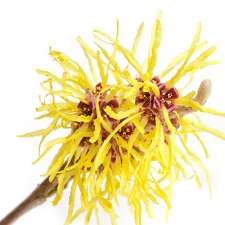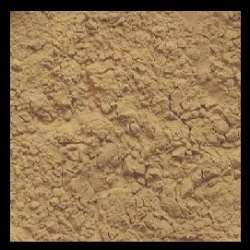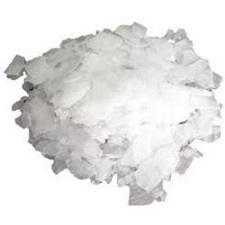Description
Witch Hazel
Witch hazel is an extract from the leaves and bark of the North American shrub Hamamelis virginiana. It has a long history in various folk medicinal treatments. According to Drugs.com, there are more than 30 traditional uses for witch hazel including hemorrhoids, burns, cancers, tuberculosis, colds and fever. Its primary use through the years has been for the treatment of skin conditions, and scientists are just now beginning to understand how it works and how it can benefit the skin.
Anti-inflammatory
One of witch hazel’s most impressive properties is its anti-inflammatory effects on conditions such as diaper rash, razor burn and bug bites. Inflammation is caused by free radicals in skin cells, and scientists at Japan’s Shiga Central Laboratory studied 65 plant extracts for their potential anti-inflammatory applications as an anti-aging treatment for skin. Only two of the extracts exhibited active oxygen-scavenging effects and protective activity against cell damage, with one being Hamamelis virginiana.
Antimicrobial
Another traditional use for witch hazel is to soothe poison ivy, treat chicken pox and heal bruises and cuts, all caused or irritated by viruses and bacteria. A German study in 2002, abstracted by the U.S. National Library of Medicine, investigated the antimicrobial activity of a Hamamelis distillate on bacteria and fungi such as Staphylococcus aureus, Candida albicans and other organisms in vitro. The results showed a significant antimicrobial activity for the witch hazel extract, leading the researchers to conclude that it can be helpful in preventing the bacterial colonization that has a central role in the development of atopic dermatitis and intertrigo dermatitis, as well as other microbial skin conditions.
Astringent
Witch hazel is considered to be a potent astringent due to the high level of tannins in the leaves, according to Drugs.com. The tannins help to tighten skin proteins which then form a protecting covering to help promote skin healing and stop bleeding. This property makes it particularly useful for treating skin conditions like eczema, as well as restoring vessel tone in varicose veins and also soothing hemorrhoids.
Moisturizer
Women frequently use witch hazel to lock moisture into skin. A study at the University Hospital Luebeck Dermatology Department in Germany treated children suffering from skin disorders and injuries with a Hamamelis ointment and found that it was safe and as effective as dexpanthenol. Dexpanthenola is a prescription drug used as a moisturizer to improve hydration of the stratum corneum, or outer skin layer, to reduce water loss from skin and to maintain skin softness and elasticity.
Sun Damage
Another traditional use for witch hazel is to treat sunburn and prevent peeling and flaking. Two separate studies at the BioSkin Institute for Dermatological Research and Development in Germany looked at witch hazel’s sun-protectant properties. The first, in 1998, treated healthy patients with a 10 percent hamamelis lotion after exposure to UVB doses, and the second, in 2002, treated healthy volunteers with the lotion after exposure to UVA radiation. In both instances, the lotion produced a significant suppression of skin redness or burning on the skin after the radiation exposure.
Source: Livestrong.com
The above information is for general research purposes only and is not a representation or warranty of any kind. This material is not intended to diagnose, treat, cure or prevent any disease. The user of this material is solely responsible for determining fitness for any particular use; requesting and reviewing the applicable Material Safety Data Sheet; and compliance with all applicable laws and regulations. Terms and conditions apply.





Duaa Odeh (verified owner) –
Excellent for face toners and eye makeup removal
Upvote if this was helpful (0) Downvote if this was not helpful (0) Watch Unwatch Flag for removal